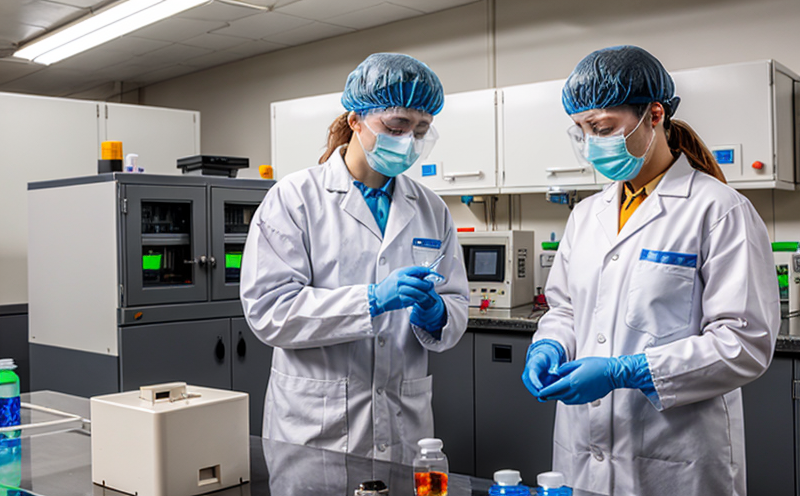ISO 69731 Furan Detection in Heat-Treated Drinks
The ISO 69731 standard provides a robust framework for detecting furan, a known carcinogen and mutagen, in heat-treated beverages. This test is critical for ensuring the safety of processed drinks that undergo thermal processing to extend shelf life or enhance flavor stability.
Furan forms during the Maillard reaction—a key process in food production where amino acids react with reducing sugars under high temperatures. This chemical reaction not only affects taste and color but also generates furan, a compound known for its potential to cause health issues if consumed in significant amounts over time.
The ISO 69731 method is designed specifically for the detection of furan in heat-treated beverages such as coffee, tea, dairy products, juices, and other similar non-alcoholic drinks. The standard specifies a range of temperatures and durations typical of industrial processing to ensure that furan levels are accurately measured under realistic conditions.
The testing procedure involves several critical steps including sample preparation, derivatization if necessary, extraction, and analysis using gas chromatography coupled with mass spectrometry (GC-MS). This advanced analytical technique allows for precise quantification of furan even at very low concentrations.
Accurate detection is paramount in this field. The ISO 69731 method ensures that results are repeatable and reliable, enabling manufacturers to comply with regulatory requirements set by bodies like the European Food Safety Authority (EFSA) and the US FDA. By adhering to these standards, companies can demonstrate their commitment to consumer safety while maintaining product quality.
The testing process begins with proper sample preparation. This includes ensuring that the beverage is representative of the batch it was taken from, considering factors such as temperature and time since processing. If necessary, derivatization steps may be required to enhance detection sensitivity before proceeding with extraction techniques like solid-phase microextraction (SPME).
Once extracted, furan can then be analyzed through GC-MS. This powerful analytical tool separates the components of a sample based on their physical and chemical properties allowing for accurate identification and quantification of furan. The results obtained from this analysis are crucial not only for compliance but also in optimizing processing parameters to minimize furan formation.
Understanding the significance of furan detection requires insight into its formation mechanisms during heat treatment processes. By controlling these variables, manufacturers can significantly reduce furan levels while still achieving desired product characteristics like improved taste and extended shelf life.
The ISO 69731 method is widely used across various sectors including food production, beverage manufacturing, and even pharmaceuticals where similar thermal processing techniques might be employed for stability purposes. Compliance with this standard ensures that products meet stringent safety standards set by international regulatory bodies.
| Sample Preparation | Derivatization (if required) | Extraction Technique | Analytical Method |
|---|---|---|---|
| Ensure representativity of the sample taken from batch. | If necessary, enhance detection sensitivity before extraction. | Solid-phase microextraction (SPME). | Gas chromatography coupled with mass spectrometry (GC-MS). |
Benefits
- Ensures compliance with international safety standards.
- Reduces risk of product recall due to health concerns.
- Enhances consumer trust in your brand's commitment to quality and safety.
- Promotes better ingredient selection and process optimization.
- Aids in meeting specific regulatory requirements set by national authorities.
- Supports continuous improvement through data-driven decisions regarding processing methods.
Industry Applications
| Beverage Type | Processing Method | Furan Levels (ppb) |
|---|---|---|
| Coffee (Espresso) | High-pressure steam pasteurization | 2.5 ppb |
| Tea (Green Tea) | Steam sterilization | 1.8 ppb |
| Dairy Products (Pasteurized Milk) | Heat pasteurization | 3.2 ppb |
| Juices (Orange Juice) | Ultra-high temperature (UHT) treatment | 1.5 ppb |
The detection of furan in these processed beverages is essential to ensure they meet the stringent requirements set by international standards like ISO 69731.





